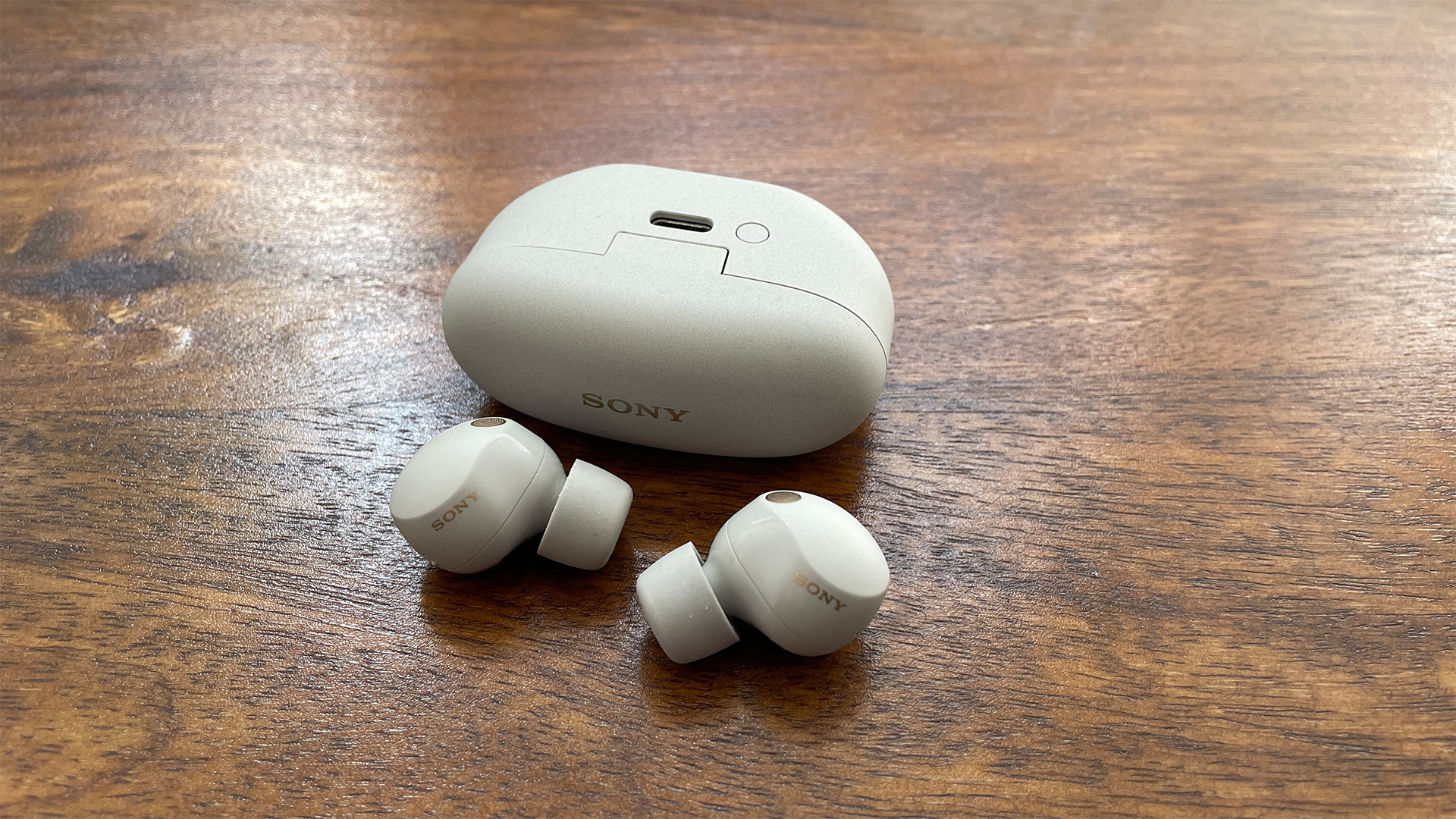What Hi-Fi? Verdict
The excellence of the LG C2 has been expanded to a fabulously cinematic size, and that’s every bit as good as you’d imagine
Pros
- +
Awesome contrast
- +
Bright and vibrant yet natural
- +
Flawless feature set for gaming
Cons
- -
Not as bright as a G2
- -
Occasionally fuzzy bass
Why you can trust What Hi-Fi?
There are times when bigger really is better, and this is one of those. While LCD TVs (often these days slightly cheekily referred to as ‘LED’ TVs) don’t always scale up to very large sizes terribly well, OLEDs tend to be very consistent across all the sizes in a range. It’s therefore perfectly reasonable to expect this 77-inch version of LG’s C2 to be every bit as brilliant as the 65-inch model we first reviewed back in May.
We’re not going to beat around the bush here – you’ve seen the star rating – the OLED77C2 really is as good as its smaller-but-still-large sibling and, of course, the extra foot of screen real estate adds a whole lot in the way of cinematic scale.
Price
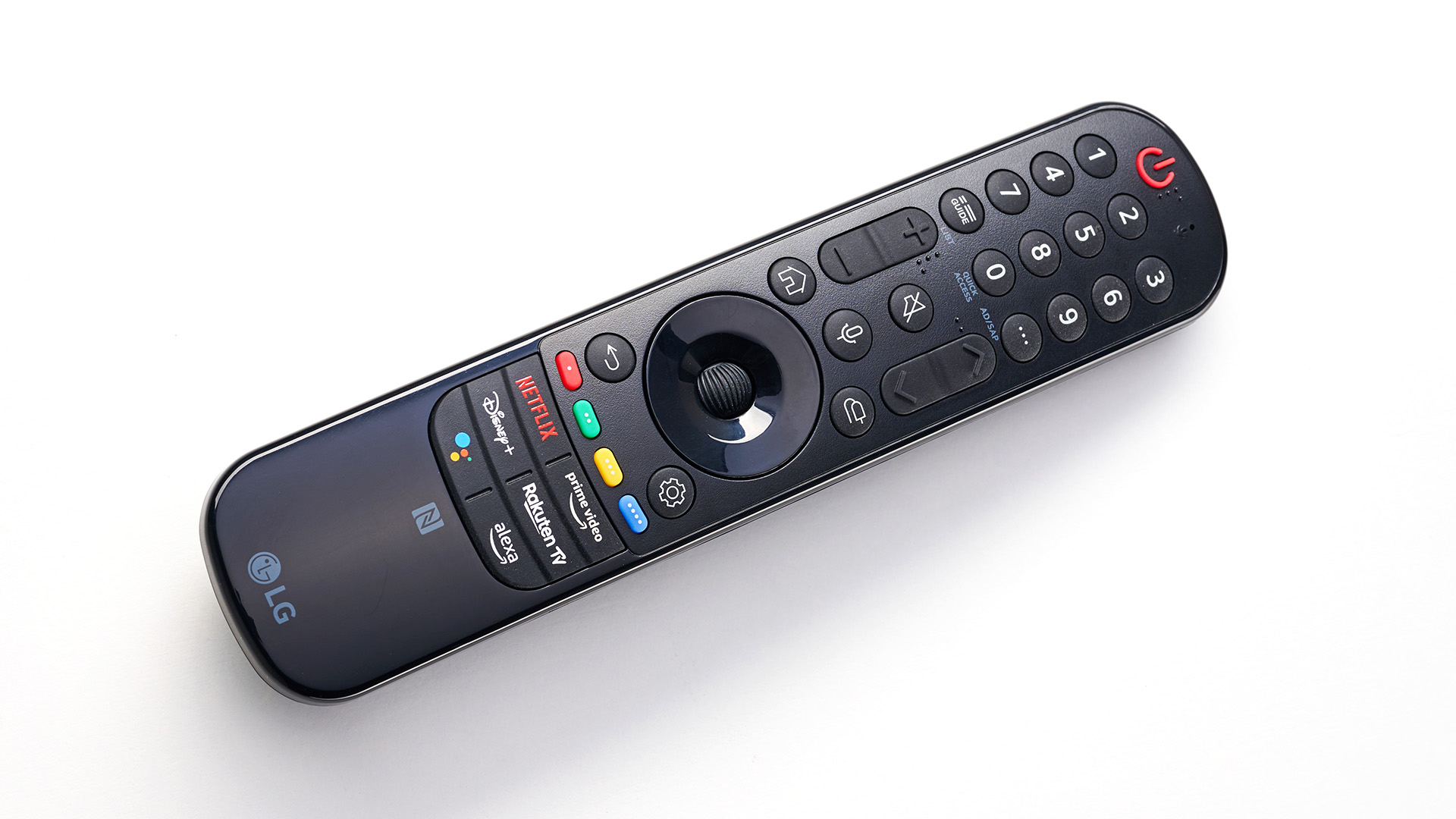
Having launched at £3699 / $3500 / AU$9599, the 77-inch C2 is available for £3299 / $2697 / AU$6495 at the time of writing.
Most potential buyers will be weighing the C2 up against its G2 sibling, which will set you back £3999 / $3800 / AU$8995 for the 77-inch version. The G2 ups the ante with a brightness-increasing heatsink and picture frame-style design, but it doesn’t come with a stand so those who aren’t wall-mounting will need to also budget extra for one of those.
The same OLED panel that’s in the C2 and G2 also features in a number of other TVs, including the Sony XR-77A80K (£3399 / $2798 / AU$7999) and the UK-only Panasonic TX-77LZ2000B (£4299) and Philips 77OLED807 (£3999). Crucially there are not yet any QD-OLED TVs larger than 65 inches, though that will likely change in 2023.
There are plenty of 75-inch LCD TVs available that a 77-inch C2 buyer might want to consider, though, most obviously the Samsung QE75QN90B (£2999 / $2600 / AU$4995) and Sony XR-75X90K (£3999 / $3200 / AU$5995).
Design
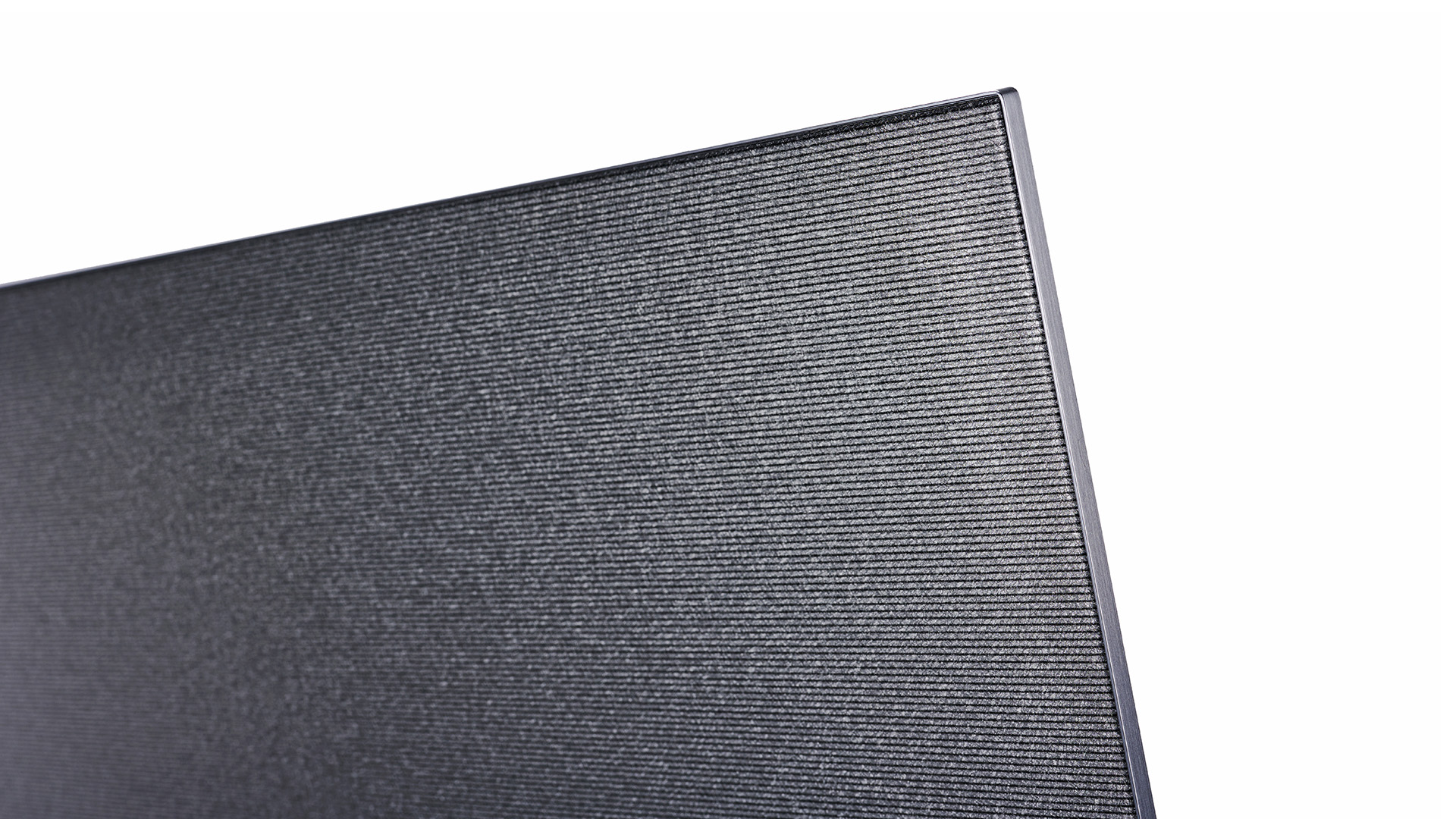
While wall-mounters will inevitably be drawn to the uniform slimness of the ‘Gallery’ G2 model, to many the fact that so much of the C2’s incredibly thin panel is unadorned by plastic casework on the rear will make it even more visually impressive. The included pedestal stand is more attractive and more compact than that of previous C-series models, too, and LG’s done an incredible job of reducing the set’s weight – were it not so large, it would be possible to lift and position the TV without the need to recruit a second pair of hands.
The latest hi-fi, home cinema and tech news, reviews, buying advice and deals, direct to your inbox.
When switched on, the image produced by the C2 has a thin black border and a barely noticeable silver frame. With the lights off and against a dark wall, the TV itself disappears so that all you see is picture.
Features
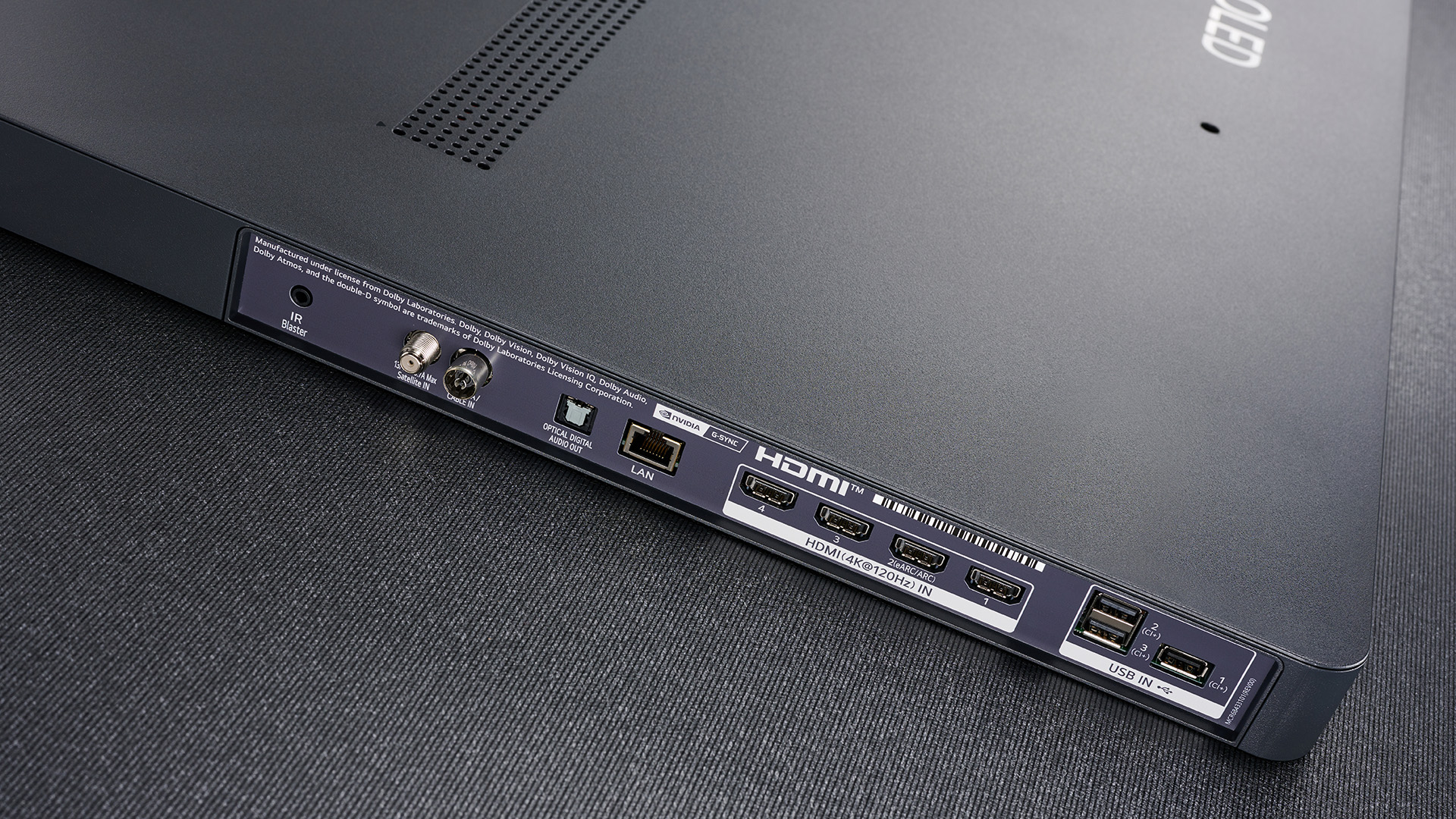
In 2021, only LG’s G-series sets were designated as ‘OLED Evo’ models, but this year the C-series gets in on the action. LG is at pains to point out that ‘OLED Evo’ refers to a combination of advanced hardware and processing, but the new, brighter OLED panel is undeniably the most crucial component. In the G2, this panel is bolstered by a heatsink that allows the set to be driven even brighter, but even without this the C2 is able to go significantly brighter than any C-series OLED before it.
As an aside, it’s worth noting that the 42-inch and 48-inch versions of the C2 aren’t able to go as bright as the models that are 55 inches or larger, apparently on account of how tightly packed together their OLEDs (Organic Light-emitting Diodes) are.
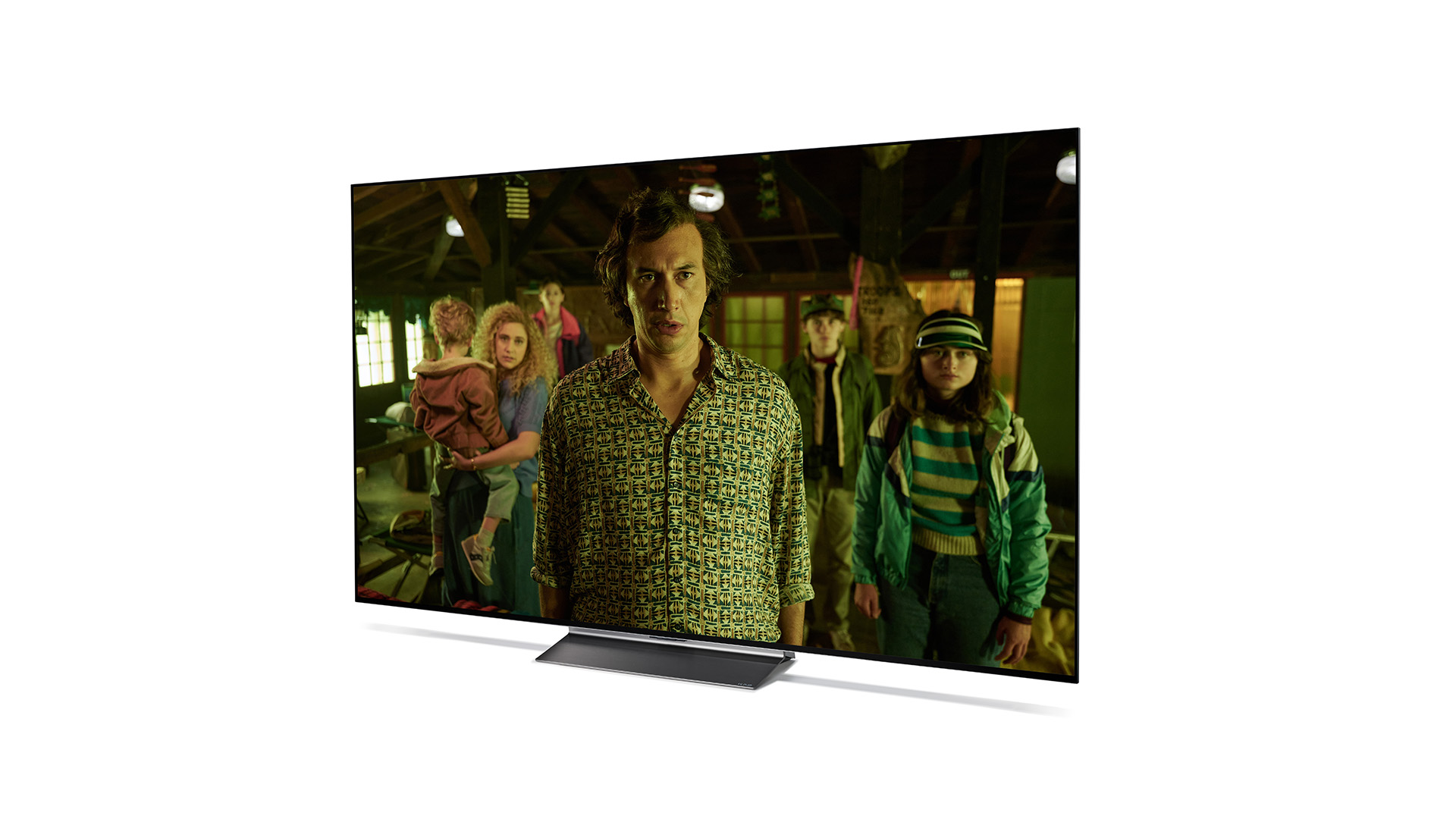
Screen size 77 inches (also available in 42in, 48in, 55in, 65in, 83in)
Type OLED
Resolution 4K
HDR formats HDR10, HLG, Dolby Vision (inc. Dolby Vision IQ with Precision Detail)
Operating system webOS 22
HDMI inputs x4, all 2.1 48Gbps
Gaming features 4K/120, VRR, ALLM, HGiG, Dolby Vision game mode
Input lag 9.4ms
ARC/eARC eARC
Optical output? Yes
Dimensions (hwd, without stand) 98 x 171 x 4.7cm
The processing side of the equation is handled by the Alpha 9 Gen 5 at the heart of the TV. On paper, at least, this isn’t vastly different to 2021’s Alpha 9 Gen 4 chip, but it does offer a handful of upgrades, including a modification to AI upscaling that apparently improves its efficiency by removing a step that could potentially add unwanted artefacts, and a new Dynamic Tone-mapping Pro Algorithm that subdivides the screen into more discrete areas (by an order of 10) for more granular enhancement. There’s a new Dynamic Vivid Mode for the Object Background Enhancement feature, too. LG says this results in better differentiation between foreground and background, with each then analysed and processed separately for greater depth of field to the image. There’s also an upgrade in the sound department, with soundtracks now being upmixed into 7.1.2 virtual channels, rather than the 5.1.2 of last year.
LG’s 2022 TVs are also the first to support a new version of Dolby Vision, called Dolby Vision IQ with Precision Detail. As the name suggests, this takes the existing Dolby Vision IQ feature, which is designed to optimise Dolby Vision content according to ambient lighting conditions, and adds an extra layer of processing that adjusts contrast and brightness in order to reveal more detail, particularly in dark parts of the picture. In testing, we find that the improvements to picture quality are fairly slight and, in fact, that Precision Detail can add a bit of shimmer in some scenes. Of course, you can simply turn the feature off and stick with standard Dolby Vision, so no harm done. The HDR10 and HLG formats of HDR are also supported, though HDR10+, predictably, is not.
On the gaming front, everything is supported, including Dolby Vision gaming right up to 4K/120Hz – something that no non-LG TV can handle. Standard 4K/120Hz signals are also supported, of course, as are VRR and ALLM. What’s more, all of these features are supported by all of the set’s four HDMI 2.1 sockets, which are rated to the full bandwidth of 48Gbps. There’s an excellent HGiG mode for more accurate HDR tone mapping with many HDR games, too, and input lag comes in at under 10ms, so the TV certainly can’t be held responsible for your poor performances in online deathmatches.
The C2 is equally fully featured on the streaming front, with the webOS22 operating system featuring every app you’re ever likely to need, with all content that should be presented in 4K, Dolby Vision and/or Dolby Atmos being so.
Picture
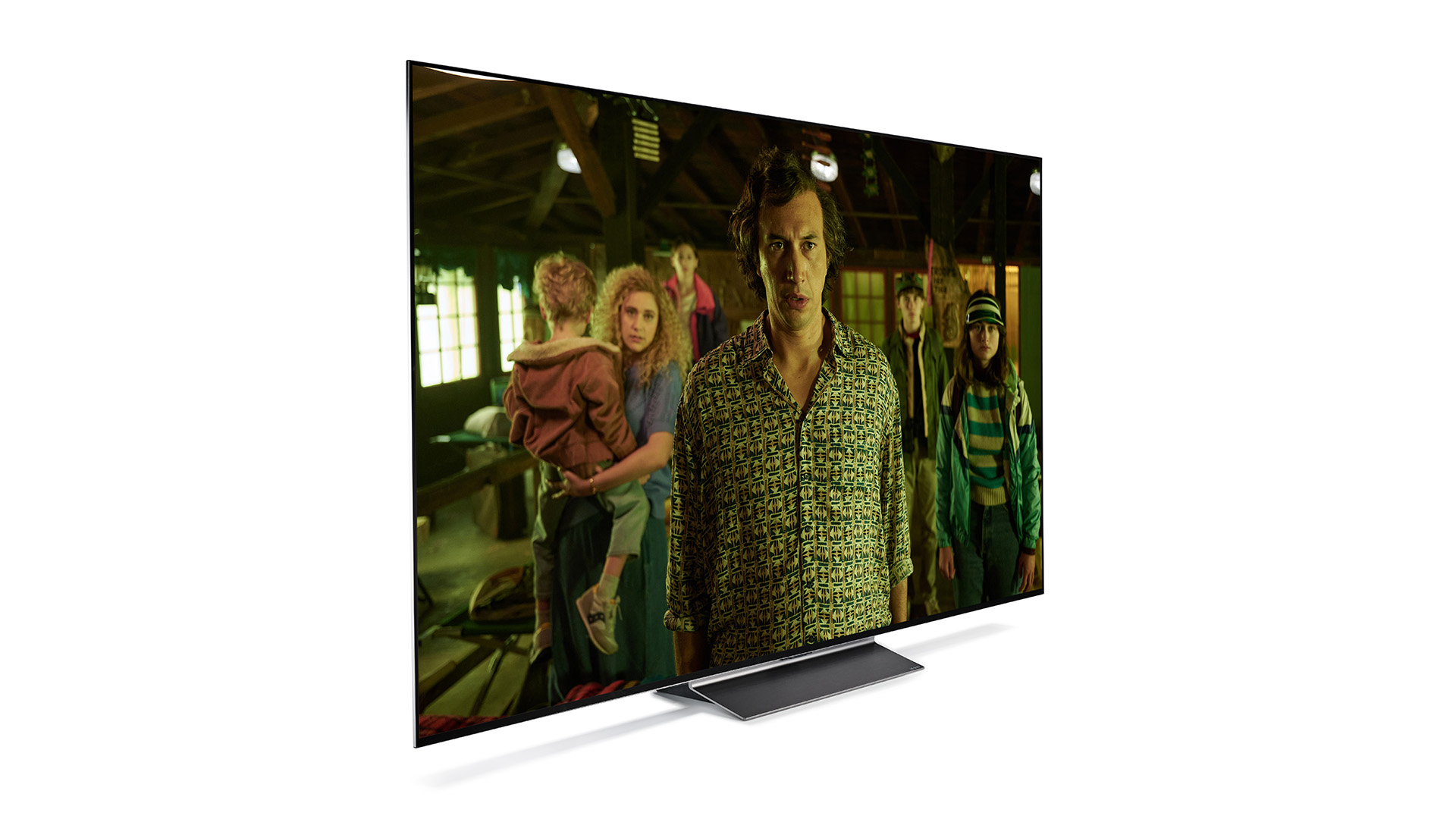
The C2 might not go as bright as the G2, but it’s beautifully punchy in its own right. That extra bit of brightness over last year’s model combines with OLED’s incredibly deep blacks to produce an image with extraordinarily exciting pop. Those bright highlights are pure white or vibrantly coloured as required, and there’s a richness and warmth to the whole delivery that’s enticing without veering into the realm of exaggeration.
The increase in brightness isn’t just evident in highlights. The image is lifted a little across the board, providing more overall impact and also increasing the amount of detail visible in the darkest parts of the picture. Again, there’s no exaggeration here – the black floor isn’t raised so there’s no sacrifice to overall depth, and there’s no suggestion that you’re being presented with more shadow detail than the director intended. It’s just a very well-balanced picture, to such an extent that you never question its interpretation of the source material. You simply settle into your movie or TV show without a thought given to any of the processing in play.
Sources in resolutions lower than 4K always look worse on bigger screens than smaller ones, but the 77-inch C2 does an admirable job of making most content look better than it probably should. 1080p films won’t be confused for 4K, but they are reproduced in sharp and detailed fashion, with natural colours and plenty of punch. Inevitably, standard-def content looks a little bit rough, but you might be surprised at how controlled and generally watchable it is considering the size of the screen and the amount of processing required to fill it. And how often do you watch DVDs these days anyway?
It’s easy to get the most out of the C2, too, thanks to a whole host of picture presets that are almost all worthwhile in their own way. One feature you will want to experiment with, though, is the TruMotion motion processing. The long and short of it is that there isn’t a perfect setting that balances smoothing and sharpening with naturalism in the way that there is with a Sony OLED, and you’re forced to make a slight compromise that involves just slightly more judder and blur than is ideal, or a degree of sharpening that very occasionally looks just a tiny bit unreal. To be clear, the LG’s motion is very good by overall TV standards, but Sony’s TVs are still marginally better.
Sound
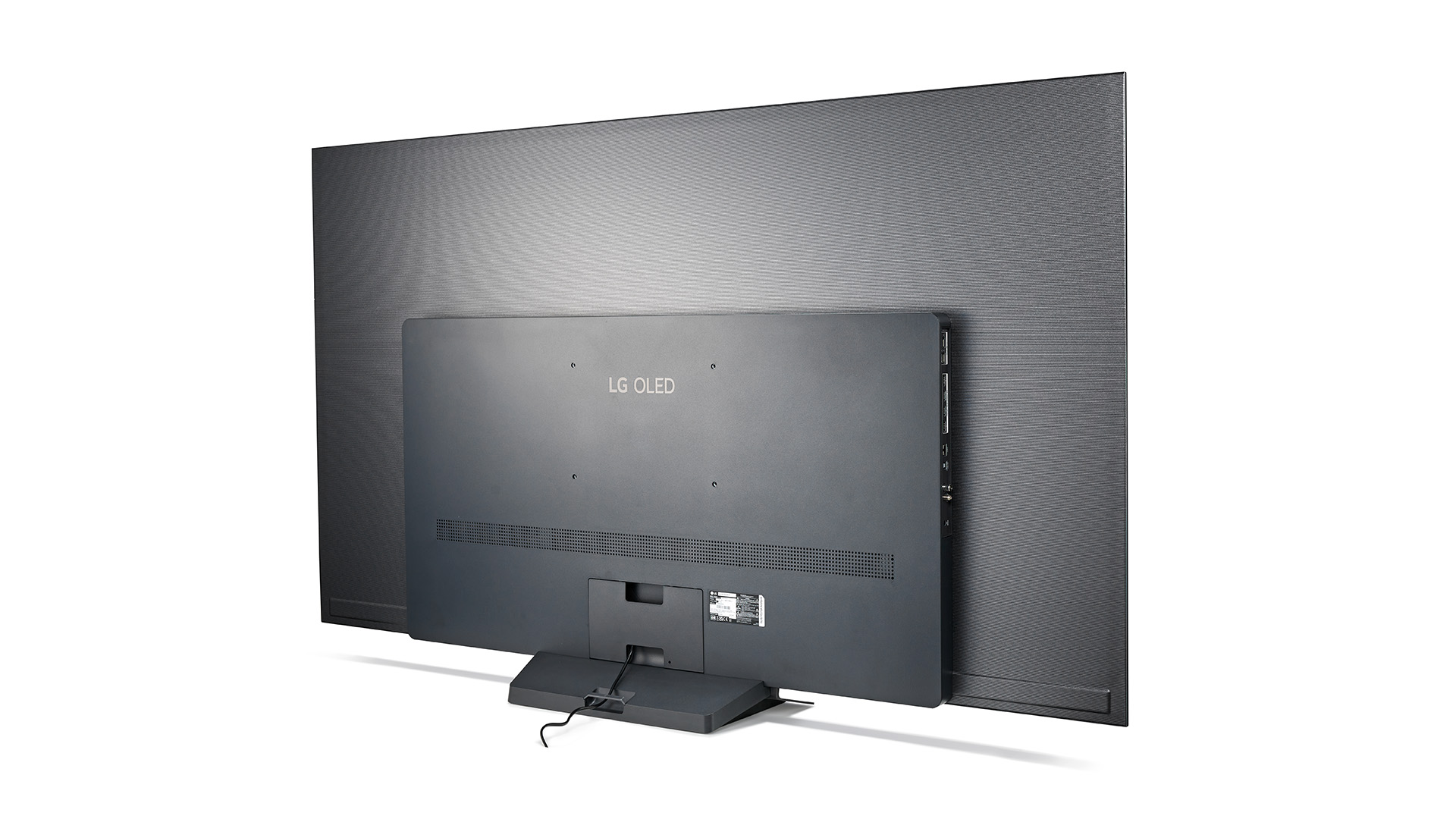
LG has always struggled somewhat to strike the right balance with the sound of its OLEDs, most notably with 2020’s CX sounding a bit uncouth and last year’s C1 veering the other way into controlled dullness. The C2, while still not perfect, is better than both of those, boasting an engaging sound with fairly well-projected and detailed dialogue, while also having good overall control.
That said, the drivers can still be provoked into a bit of buzz by particularly bassy soundtrack elements, such as those at the start of chapter two of the Blade Runner 2049 4K Blu-ray.
Even without this occasional issue, the idea of someone forking out for a TV this great and this large without also budgeting for a dedicated sound system is unconscionable. A Sonos Beam Gen 2 will be a substantial sonic upgrade, but you’re hopefully considering at least a premium soundbar, if not a proper home cinema system.
Verdict
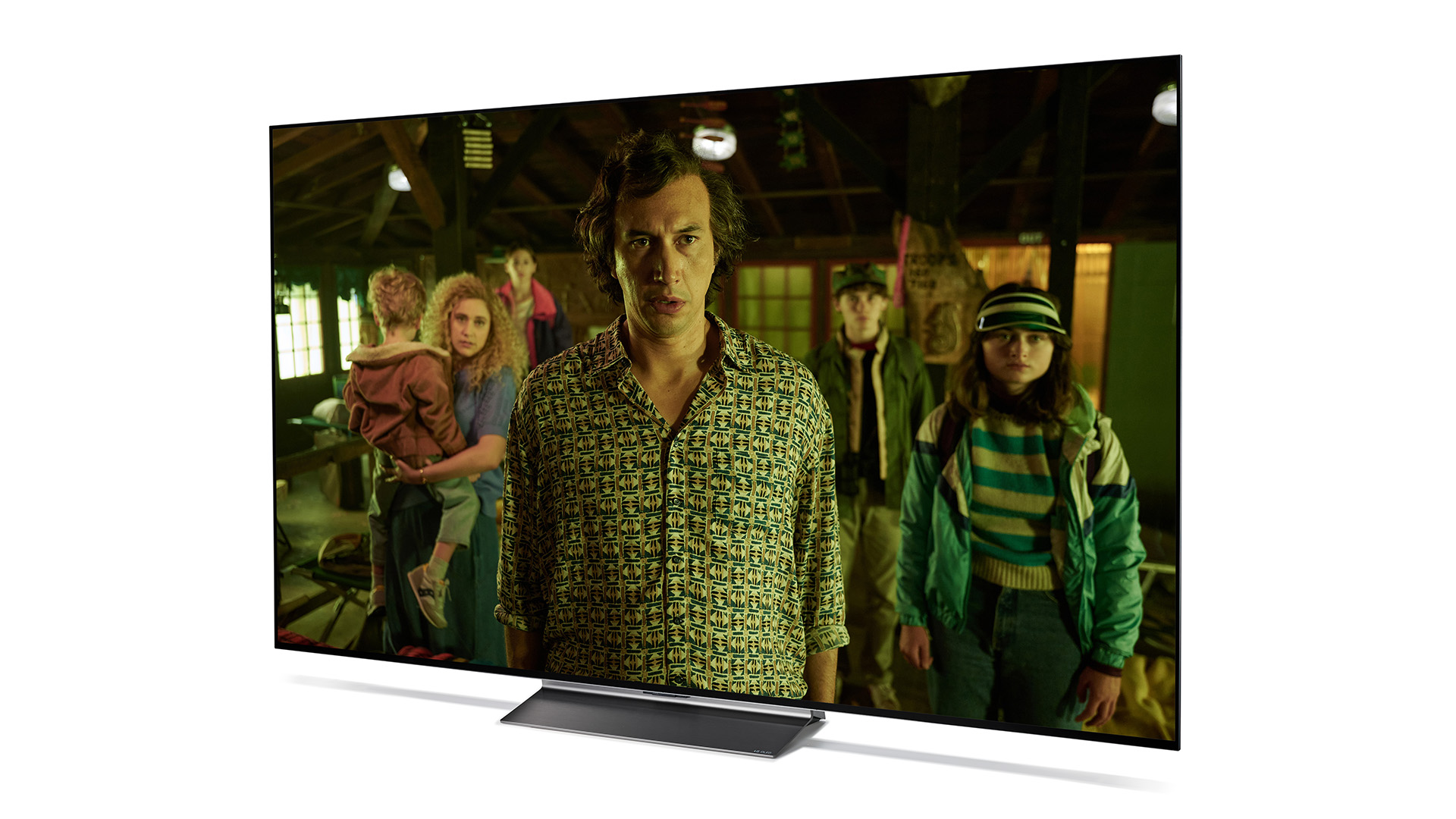
While the G2 is undeniably even better than the C2, essentially providing the same, excellent picture quality but with even more punch, we don’t think it’s the better purchase overall. The C2 is just so good in its own right and such a fantastic overall package that justifying the extra spend for the G2’s marginal extra gains feels unnecessary.
This is an extraordinarily good TV at an epically cinematic size. It’s impossible not to love the C2, particularly at 77 inches, so don’t bother trying. If you’ve got the money and the space, there’s no better buy.
SCORES
- Picture 5
- Sound 4
- Features 5
MORE:
See all the What Hi-Fi? Awards 2022 winners
Read our review of the LG OLED77Z2
Also consider the LG OLED65G2
Read our Samsung QE75QN900B review
Best OLED TV: brilliant budget and premium OLED TVs
Tom Parsons has been writing about TV, AV and hi-fi products (not to mention plenty of other 'gadgets' and even cars) for over 15 years. He began his career as What Hi-Fi?'s Staff Writer and is now the TV and AV Editor. In between, he worked as Reviews Editor and then Deputy Editor at Stuff, and over the years has had his work featured in publications such as T3, The Telegraph and Louder. He's also appeared on BBC News, BBC World Service, BBC Radio 4 and Sky Swipe. In his spare time Tom is a runner and gamer.
- Ketan BharadiaTechnical Editor

